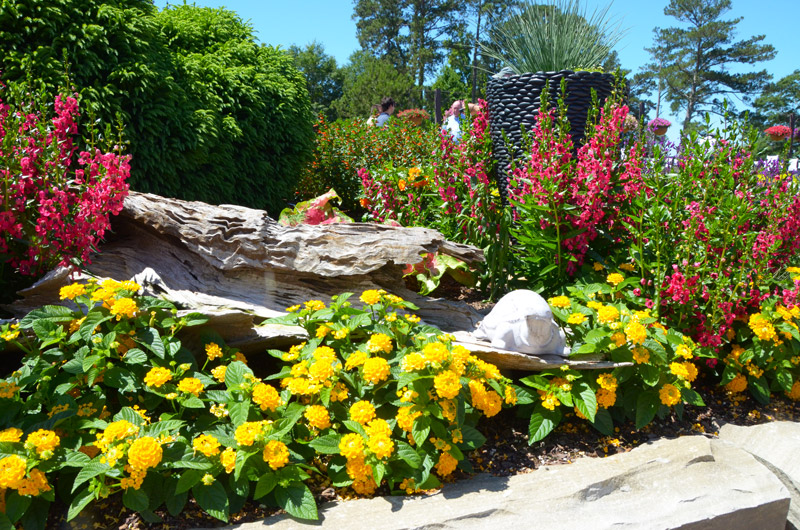The 25-Second Trick For Hilton Head Landscapes
The 25-Second Trick For Hilton Head Landscapes
Blog Article
Not known Facts About Hilton Head Landscapes
Table of ContentsSome Known Incorrect Statements About Hilton Head Landscapes Fascination About Hilton Head LandscapesNot known Details About Hilton Head Landscapes Hilton Head Landscapes for DummiesTop Guidelines Of Hilton Head LandscapesThe 6-Second Trick For Hilton Head LandscapesThe Definitive Guide for Hilton Head Landscapes
Line produces all forms and patterns and can be made use of in a selection of methods in the landscape. Line in the landscape is developed by the side in between 2 materials, the summary or shape of a type, or a lengthy straight feature. Lines are a powerful device for the developer because they can be made use of to produce a limitless range of forms and types, and they regulate activity of the eye and the body.

Lines can have several qualities, such as those defined below, yet they generally serve various purposes. Number 1. Lines in the landscape - landscapers hilton head island. The residential properties of lines identify exactly how individuals respond to the landscape, both emotionally and literally. Straight lines are structural and strong; they produce an official character, are generally connected with a balanced design, and lead the eye straight to a prime focus.
Hilton Head Landscapes Things To Know Before You Buy
Straight lines are most often found in hardscape edges and material. Curved lines create an informal, natural, kicked back personality that is connected more with nature and unbalanced balance. Bent lines relocate the eye at a slower speed and include enigma to the room by creating covert sights. Upright lines relocate the eye up, making a room feel bigger.
Vertical lines in the landscape include tall, slim plant material, such as trees, or tall frameworks, such as an arbor or a bird home on a pole. Horizontal lines move the eye along the ground airplane and can make a space really feel bigger. Low lines are more subdued and create a sensation of remainder or repose.
An Unbiased View of Hilton Head Landscapes
Lines are likewise created by the upright types of developed features and plant material. There are 3 primary line kinds that create kind in the landscape: bedlines, hardscape lines, and plant lines.
Bedlines link plant product to the residence and hardscape due to the fact that the eye follows the line, relocating the look through the landscape. Hardscape lines are produced by the side of the hardscape, which marks the built structure. Line can additionally be created by lengthy and slim materials, such as a fence or wall surface.
The Only Guide for Hilton Head Landscapes
Form is found in both hardscape and plants, and it is generally the dominant aesthetic aspect that spatially arranges the landscape and usually establishes the style of the yard. The form of frameworks, plant beds, and garden ornaments also determines the general type style of the garden. Formal, geometric forms include circles, squares, and polygons.
Plants create form in the garden through their describes or silhouettes, however type can likewise be specified by a space or negative room in between plants - bluffton landscaping (https://www.tripadvisor.in/Profile/h1tnhdlndscps). Circles can be cycles, or they can be divided into half circles or circle sections and incorporated with lines to develop arcs and tangents
Hilton Head Landscapes - The Facts
Circles are a solid design kind since the eye is always attracted to the center, which can be utilized to stress a focal point or attach other types. Round forms in hardscape and grass panels.
The square type can additionally be fractional and secondhand repetitively to create a grid pattern. Unlike circles, squares are more powerful on the edges, which can be lined up or overlapped to create distinct patterns and more complex forms. Polygons are many-sided forms with straight edges. Triangulars, for instance, are three-sided polygons.
Twisting lines often simulate the all-natural training course of rivers or streams and can be called smooth lines with deeply curved undulations. Meandering lines (Number 3) work well for paths, plant bedlines, and dry stream beds. Meandering lines can include interest and secret to a yard by leading viewers around edges to find new sights and spaces.
A Biased View of Hilton Head Landscapes

Figure 5. Fragmented edges: stepping stones in pathway. Form is one of the most long-lasting quality of a plant (bluffton landscaping). https://www.mixcloud.com/h1tnhdlndscps/. Common plant kinds are well developed and standardized, as kind is one of the most constant and recognizable feature of plants. Kind can likewise be created via the massing of plants, where the general mass produces a various type than an individual plant.
A very contrasting kind should be made use of with careone or 2 job well as a centerpiece, yet as well many wreak havoc. Natural plant kinds, instead than over-trimmed types, must develop the bulk of the make-up. The importance of overall kind is essentially based on the seeing perspectivethe kind of a tree can appear rather different to a person standing under the cover versus seeing the tree from a distance in an open area.
Not known Details About Hilton Head Landscapes
Plant forms likewise develop and specify the space go to this web-site or open areas in between the plants, creating either convex or concave kinds in the voids. High-arching tree branches generally produce a concave open area under the branches, and a rounded cover with reduced branches fills the area to develop a convex kind outdoors area under the tree.

Report this page